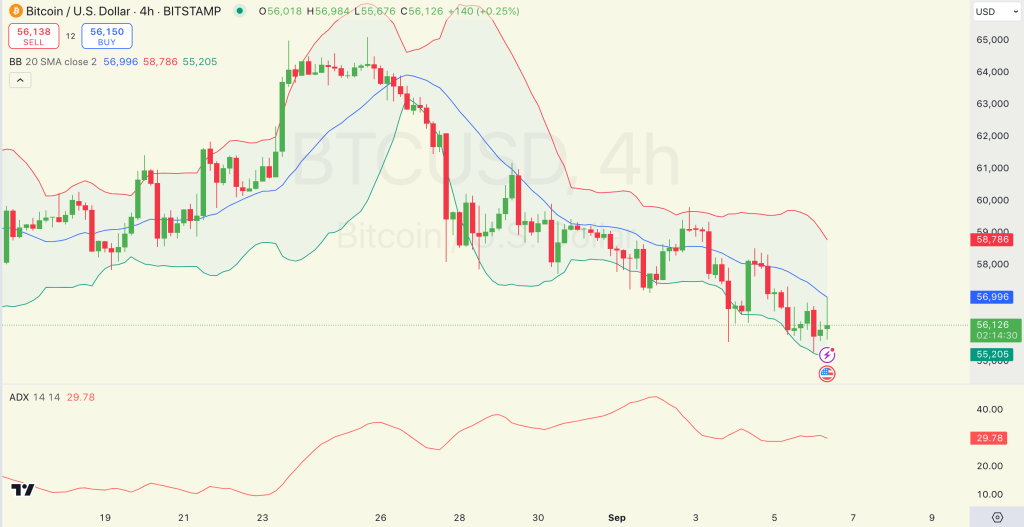
A massive Bitcoin whale recently transferred 1,000 BTC, worth approximately $55.36 million, to Binance at a significant loss. The transaction occurred roughly 25 minutes ago, indicating a bearish sentiment creeping into the market. This position shift has caught the cryptocurrency community’s attention, particularly given the whale’s prior moves.
Between August 29 and September 3, the same whale had withdrawn 2,322 BTC from Binance at an average price of $58,597, amounting to an estimated cost of $136 million. However, with Bitcoin’s current price, the whale is experiencing a loss of around $6.94 million or -5.1%. This rapid shift in sentiment is particularly alarming, as it suggests that even significant holders are not immune to bearish momentum in the market.
Analysis of the BTC/USD Chart
According to Spot on Chain, the attached four-hour chart of Bitcoin against the US Dollar (BTC/USD) highlights a pronounced bearish trend over the past few days. The price is currently hovering around $56,126, below both the 20-period simple moving average (SMA) and the mid-line of the Bollinger Bands, which are set to standard deviations of 2. This indicates that the market is experiencing higher volatility, with Bitcoin trading toward the lower end of its range.
The Bollinger Bands show that the price has repeatedly tested the lower band, suggesting that selling pressure remains dominant. The 20 SMA is currently positioned at $56,996, and a failure to reclaim this level could lead to further downward pressure. The upper Bollinger Band, set at $58,786, is the next resistance level if the price attempts to recover.

The Average Directional Index (ADX) reading of 29.78 signals a moderately strong trend, indicating that the bearish trend may continue unless there’s a significant shift in market sentiment. The lack of a strong reversal signal implies that traders should exercise caution, especially with the potential for further downside risk.
The fact that such a large Bitcoin holder is willing to incur a multi-million dollar loss could signal growing concerns about short-term market prospects. It raises questions about whether other whales may follow suit, potentially accelerating a bearish market trend. Market participants should closely monitor whale activity, as significant moves from large holders often precede broader market shifts.








